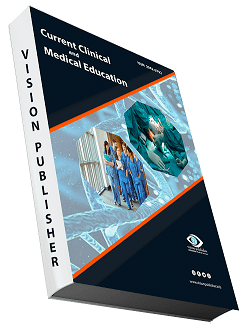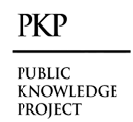Magnetic Resonance Spectroscopy: MRI Scanner, Cerebral Proton Spectroscopy, and Using of PET/CT Scanning in Cancer Patients
Keywords:
MRI Scanner, Cerebral Proton Spectroscopy, PET/CT Scanning, Cancer patientsAbstract
The elimination of the need for patients to undergo potentially harmful ionising radiation exposure is one of the many ways in which the advent of magnetic resonance imaging (MRI) has revolutionised medical research and diagnosis. The utilisation of magnetic resonance imaging (MRI) is expanding in clinical practice due to its increasing availability and lowering cost. In order to make more informed therapeutic decisions, it is helpful to have a firm grasp of the concepts underpinning this imaging modality and its various uses. Reviewing the fundamentals of magnetic resonance imaging (MRI), this article goes on to cover its many clinical uses, including parallel, diffusion-weighted, and magnetisation transfer imaging. A review of important metabolites and their potential interpretation is also provided, along with an examination of MR spectroscopy. The price of magnetic resonance imaging (MRI) scanners has already dropped significantly, making them more accessible. However, experts predict that this trend will only accelerate in the years to come. Magnetic resonance cholepancreatography (MR chole) and magnetic resonance imaging (MRI) of the brain, pancreas, liver, and abdomen will be standard procedures. The widespread deployment of 3 T machines, which are already in use in some locations, is likely to lead to an even stronger magnetic field. Magnetic resonance imaging (MRI) will become increasingly important in routine diagnosis as a result of improvements in resolution and tissue contrast, leading to a decline in the use of invasive diagnostic techniques like endoscopy. In conclusion, we believe that the doctor would benefit greatly from understanding the fundamental physics principles of magnetic resonance imaging (MRI). To make sure the methods are used appropriately, it is important to know their limitations. The notion of nuclear "spin" and the reaction of nuclei to external magnetic fields form the basis of the working mechanism of MRI. To create a free-induction decay and, by extension, a signal that can be transformed into interpretable data, magnetic resonance (MR) pulses need to be supplied at the resonant frequency of a particle. To pinpoint MR signals in space or tissue, MR gradients are necessary. These are created by strategically placing several radiofrequency coils in various locations throughout the room. In order to shorten the scan duration, parallel imaging makes use of several RF coils. T systems have a better signal-to-noise ratio and more resolution than the standard 1.5 T models used in clinical practice, making them ideal for use in research settings. To indirectly assess protein/lipid components relative to body water, magnetisation transfer imaging can be employed to see typically MR-invisible protons attached to macromolecules. The water component of the brain can be imaged using diffusion-weighted imaging, and water flow can be studied in great detail at the microscopic cellular level using diffusion tensor imaging. Using chemical shift imaging or singlevoxel spectroscopy, Magnetic Resonance Spectroscopy may ascertain the precise chemical composition of a specimen.
Downloads
References
Lardinois D, Weder W, Hany TF, Kamel EM, Korom S, Seifert B, von Schulthess GK, Steinert HC. Staging of non–small-cell lung cancer with integrated positron-emission tomography and computed tomography. N Engl J Med 2003;348:2500–2507.
Antoch G, Saoudi N, Kuehl H, Dahmen G, Mueller SP, Beyer T, Bockisch A, Debatin JF, Freudenberg LS. Accuracy of whole-body dual-modality fluorine-18–2-fluoro-2-deoxy-D-glucose positron emission tomography and computed tomography (FDG-PET/CT) for tumor staging in solid tumors: comparison with CT and PET. J Clin Oncol 2004;22:4357–4368.
Bloch F, Hansen WW, Packard ME. Nuclear induction. Phys Rev. 1946;69:127. 2. Purcell EM, Torrey HC, Pound RV. Resonance absorption by nuclear magnetic moments in a solid. Phys Rev. 1946;69:37–38.
Hawkes RC, Holland GN, Moore WS, Worthington BS. Nuclear magnetic resonance (NMR) tomography of the brain: a preliminary clinical assessment with demonstration of pathology. J Comput Assist Tomogr. 1980;4(5):577–586.
Smith FW, Hutchison JM, Mallard JR, et al. Oesophageal carcinoma demonstrated by whole-body nuclear magnetic resonance imaging. Br Med J (Clin Res Ed). 1981;282(6263):510–512.
Westbrook C, Roth CK, Talbot J. MRI in Practice. 4th edition London: John Wiley & Sons, Inc.; 2011. 6. Di Costanzo A, Trojsi F, Tosetti M, et al. High-field proton MRS of human brain. Eur J Radiol. 2003;48(2):146–153.
Soher BJ, Dale BM, Merkle EM. A review of MR physics: 3 T versus 1.5 T. Magn Reson Imaging Clin N Am. 2007;15(3):277– 290.
Rovira A, Cordoba J, Sanpedro F, Grive E, Rovira-Gols A, Alonso J. Normalization of T2 signal abnormalities in hemispheric white matter with liver transplant. Neurology. 2002;59(3):335– 341.
Rovira A, Grive E, Pedraza S, Rovira A, Alonso J. Magnetization transfer ratio values and proton MR spectroscopy of normalappearing cerebral white matter in patients with liver cirrhosis. Am J Neuroradiol. 2001;22(6):1137–1142.
Hajnal JV, Baudouin CJ, Oatridge A, Young IR, Bydder GM. Desig and implementation of magnetization transfer pulse sequences for clinical use. J Comput Assist Tomogr. 1992;16(1):7–18.
Wolff SD, Balaban RS. Magnetization transfer contrast (MTC) and tissue water proton relaxation in vivo. Magn Reson Med. 1989;10 (1):135–144.
Baird AE, Warach S. Magnetic resonance imaging of acute stroke. J Cereb Blood Flow Metab. 1998;18(6):583–609.
Moseley ME, Kucharczyk J, Mintorovitch J, et al. Diffusion-weighted MR imaging of acute stroke: correlation with T2 weighted and magnetic susceptibility-enhanced MR imaging in cats. AJNR Am J Neuroradiol. 1990;11(3):423–429.
Larsson HB, Thomsen C, Frederiksen J, Stubgaard M, Henriksen O. In vivo magnetic resonance diffusion measurement in the brain of patients with multiple sclerosis. Magn Reson Imaging. 1992;10 (1):7–12.
Kono K, Inoue Y, Nakayama K, et al. The role of diffusion-weighted imaging in patients with brain tumors. AJNR Am J Neuroradiol. 2001;22(6):1081–1088.
Stadnik TW, Chaskis C, Michotte A, et al. Diffuion-weighted MR imaging of intracerebral masses: comparison with conventional MR imaging and histologic findings. AJNR Am J Neuroradiol. 2001;22(5):969–976.
Chenevert TL, Brunberg JA, Pipe JG. Anisotropic diffusion in human white matter: demonstration with MR techniques in vivo. Radiology. 1990;177(2):401–405.
Doran M, Hajnal JV, Van Bruggen N, King MD, Young IR, Bydder GM. Norma and abnormal white matter tracts shown by MR imaging using directional diffusion weighted sequences. J Comput Assist Tomogr. 1990;14(6):865–873.
Basser PJ, Mattiello J, LeBihan D. MR diffusion tensor spectroscopy and imaging. Biophys J. 1994;66(1):259–267
. Basser PJ, Jones DK. Diffusion-tensor MRI: theory, experimental design and data analysis—a technical review. NMR Biomed. 2002;15(7):456–467.
Mori S, van Zijl P. 2005, MR tractography using diffusion tensor imaging. In: Gillard J, Waldman A, Barker PB, eds. In: Clinical MR Neuroimaging 1st edition Cambridge University Press; 2005:86– 98.
Jones DK. Fundamentals of diffusion MR imaging. In: Gillard J, Waldman A, Barker PB, eds. In: Clinical MR Neuroimaging 1st edition Cambridge University Press; 2005:54–85.
Mori S, Barker PB. Diffusion magnetic resonance imaging: its principle and applications. Anat Rec. 1999;257(3):102–109.
Le Bihan D, Breton E, Lallemand D, Grenier P, Cabanis E, LavalJeantet M. MR imaging of intravoxel incoherent motions: application to diffusion and perfusion in neurologic disorders. Radiology. 1986;161(2):401–407.
Beaulieu C. The basis of anisotropic water diffusion in the nervous system—a technical review. NMR Biomed. 2002;15(7):435–455.
Alexander AL, Lee JE, Wu YC, Field AS. Comparison of diffusion tensor imaging measurements at 3.0 T versus 1.5 T with and without parallel imaging. Neuroimaging Clin N Am. 2006;16 (2):299–309.
Kuhl CK, Textor J, Gieseke J, et al. Acute and subacute ischemic stroke at high-field-strength (3.0-T) diffusion-weighted MR imaging: intraindividual comparative study. Radiology. 2005;234(2):509– 516.
Habermann CR, Gossrau P, Kooijman H, et al. Monitoring of gustatory stimulation of salivary glands by diffusion-weighted MR imaging: comparison of 1.5 T and 3 T. AJNR Am J Neuroradiol. 2007;28(8):1547–1551.
Kuhl CK, Gieseke J, von FM, et al. Sensitivity encoding for diffusionweighted MR imaging at 3.0 T: intraindividual comparative study. Radiology. 2005;234(2):517–526.
Lee CE, Danielian LE, Thomasson D, Baker EH. Normal regional fractional anisotropy and apparent diffusion coefficient of the brain measured on a 3 T MR scanner. Neuroradiology. 2009;51(1):3–9.
Correia MM, Carpenter TA, Williams GB. Looking for the optimal DTI acquisition scheme given a maximum scan time: are more b-values a waste of time? Magn Reson Imaging. 2009;27(2):163–175.
Jones DK. The effect of gradient sampling schemes on measures derived from diffusion tensor MRI: a Monte Carlo study. Magn Reson Med. 2004;51(4):807–815.
Xing D, Papadakis NG, Huang CL, Lee VM, Carpenter TA, Hall LD. Optimsed diffusion-weighting for measurement of apparent diffusion coefficient (ADC) in human brain. Magn Reson Imaging. 1997;15(7):771–784.
Burdette JH, Elster AD, Ricci PE. Calculation of apparent diffusion coefficients (ADCs) in brain using two-point and six-point methods,. J Comput Assist Tomogr. 1998;22(5):792–794.
Bottomley PA. The trouble with spectroscopy papers. Radiology. 1991;181(2):344–350.
Lundbom J, Hakkarainen A, Fielding B, et al. Characterizing human adipose tissue lipids by long echo time 1 H-MRS in vivo at 1.5 Tesla: validation by gas chromatography. NMR Biomed. 2010;23(5):466– 472.
Matthaei D, Frahm J, Haase A, Merboldt KD, Hanicke W. Multipurpose NMR imaging using stimulated echoes. Magn Reson Med. 1986;3(4):554–561.
Bottomley PA. Spatial localization in NMR spectroscopy in vivo. Ann N Y Acad Sci. 1987;508:333–348.
Klose U. Measurement sequences for single voxel proton MR spectroscopy. Eur J Radiol. 2008;67(2):194–201.
Keevil SF, Barbiroli B, Brooks JC, et al. Absolute metabolite quantification by in vivo NMR spectroscopy: II. A multicentre trial of protocols for in vivo localised proton studies of human brain. Magn Reson Imaging. 1998;16(9):1093–1106
Bar-Shalom R, Yefremov N, Guralnik L, Gaitini D, Frenkel A, Kuten A, Altman H, Keidar Z, Israel O. Clinical performance of PET/CT in evaluation of cancer: additional value for diagnostic imaging and patient management. J Nucl Med 2003;44:1200–1209.
Antoch G, Stattaus J, Nemat AT, Marnitz S, Beyer T, Kuehl H, Bockisch A, Debatin JF, Freudenberg LS. Non-small cell lung cancer: dual-modality PET/CT in preoperative staging. Radiology 2003;229:526–533.
Keidar Z, Haim N, Guralnik L, Wollner M, Bar-Shalom R, Ben-Nun A, Israel O. PET/CT using 18F-FDG in suspected lung cancer recurrence: diagnostic value and impact on patient management. J Nucl Med 2004;45: 1640–1646.
Cohade C, Osman M, Leal J, Wahl RL. Direct comparison of 18F-FDG PET and PET/CT in patients with colorectal carcinoma. J Nucl Med 2003;44: 1797–1803.
Israel O, Mor M, Guralnik L, Hermoni N, Gaitini D, Bar-Shalom R, Keidar Z, Epelbaum R. Is 18F-FDG PET/CT useful for imaging and management of patients with suspected occult recurrence of cancer? J Nucl Med 2004;45: 2045–2051.
Even-Sapir E, Parag Y, Lerman H, Gutman M, Levine C, Rabau M, Figer A, Metser U. Detection of recurrence in patients with rectal cancer: PET/CT after abdominoperineal or anterior resection. Radiology 2004;232:815–822.
Freudenberg LS, Antoch G, Schutt P, Beyer T, Jentzen W, Muller SP, Gorges R, Nowrousian MR, Bockisch A, Debatin JF. FDG-PET/CT in re-staging of patients with lymphoma. Eur J Nucl Med Mol Imaging 2004;31:325–329.
Gutzeit A, Antoch G, Kuhl H, Egelhof T, Fischer M, Hauth E, Goehde S, Bockisch A, Debatin J, Freudenberg L. Unknown primary tumors: detection with dual-modality PET/CT—initial experience. Radiology 2005;234: 227–234

Downloads
Published
How to Cite
Issue
Section
License

This work is licensed under a Creative Commons Attribution 4.0 International License.
Current Clinical and Medical Education












